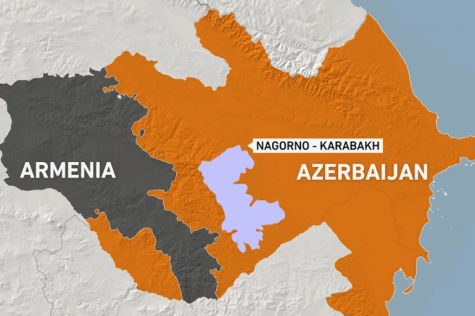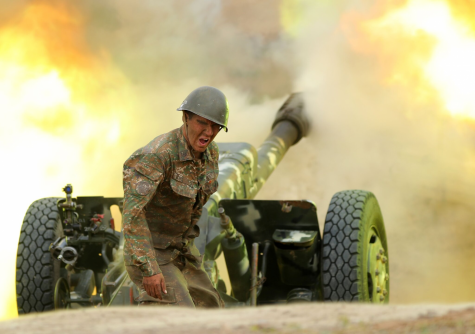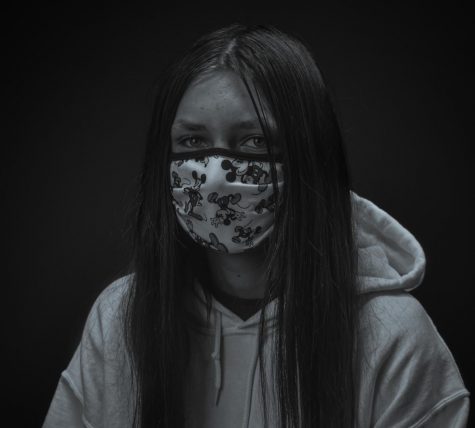The Armenia-Azerbaijan Conflict, Explained
Escalating tensions and hostility have renewed a decades-long struggle in the Nagorno-Karabakh region.
With so many things going on all at once in our country, it can be hard to pay attention to the bigger world around us. From the presidential election to a spike in COVID cases, there’s enough on our minds as is. Nevertheless, it is vital we take notice of struggles and events in other countries and regions.
One such region that has been particularly relevant recently is Nagorno-Karabakh, located in an area known as the Southern Caucasus. The region is home to roughly 150,000 people, many of them ethnic Armenians. And while the territory is recognized as part of Azerbaijan, Armenia and many of the people residing in Nagorno-Karabakh dispute that ownership. This disagreement spans generations and has led to fighting, UN intervention, and even full-scale war.

While tension has existed in the region for centuries, the modern-day conflict technically began in 1988 with the breakup of the Soviet Union. After receiving independence, the newly-formed republics of Armenia and Azerbaijan quickly entered into conflict over Nagorno-Karabakh. While it was peaceful at first, an independence referendum quickly turned things violent. There was overwhelming support in the region for Armenian unification, which Azerbaijan desperately tried to quell. This tension escalated into the First Nagorno-Karabakh War, which lasted 6 years. Full-scale fighting went on for about two years until a Russian-led ceasefire was finally able to end the war. All in all, nearly 40,000 lives were lost.
Small, individual clashes occurred after the ceasefire but were nowhere near as bloody as in past years. However, that isn’t to say the conflict went away. It was still common for fights between the countries to occur, especially after election years and other significant events in either country. In the years after the war and up to last year, roughly 3,500 casualties were recorded.
This brings us to the present day, in which tensions have resumed at an all-time high. Beginning last September, an unprecedented amount of fighting erupted in several areas. Casualties rose rapidly, prompting severe reactions from both countries. Armenia and Azerbaijan imposed curfews on various territories, vamped up military spending, and even declared martial law. In fact, fighting has been so bad that there have been more casualties in the past few months than in the last 20 years.

The increase in tensions is largely in part to intervention from another country in the region, Turkey. The country is very closely tied to Azerbaijan, both culturally and militarily, and has shown unprecedented support for their cause in the past few months. Turkey is also tied to Armenia, but in a far more negative manner. In the early 1900s, 1.5 million Armenians were horrifically killed in a genocide instigated by the Ottoman Empire, now known as Turkey. Relations between the two countries have been hostile ever since, largely due to the fact that Turkey denies much of the genocide.
With Azerbaijan receiving Turkish support, both militarily and diplomatically, this conflict has become even more violent. Turkish air support and financial backing give the already strong Azerbaijan even more of an upper hand. This allowed the country to capture five cities and dozens of smaller towns and villages with ease.
Territorial loss and a lack of international support led Armenia to sign a ceasefire, giving Azerbaijan more control over the region. While the ceasefire is promising, it’s likely the conflict will still continue. Many people in the region are still hostile towards one another and staunch in their beliefs, which has made polar opposite sides. A ceasefire alone will likely not be able to fix such a large amount of division.
The unpredictability of this conflict is what makes it so necessary for people to be informed about it. Fighting and hostility have existed for generations, showing no sign of stopping. And since there is a large number of people from this region in not only America but our own community, it’s important we know about something that may directly impact them.

Demir Mikulin is a sophomore here at Eaglecrest and this is his first year on staff! He prefers the written content side of advanced media, and loves to...





